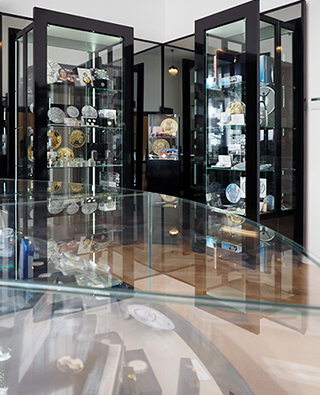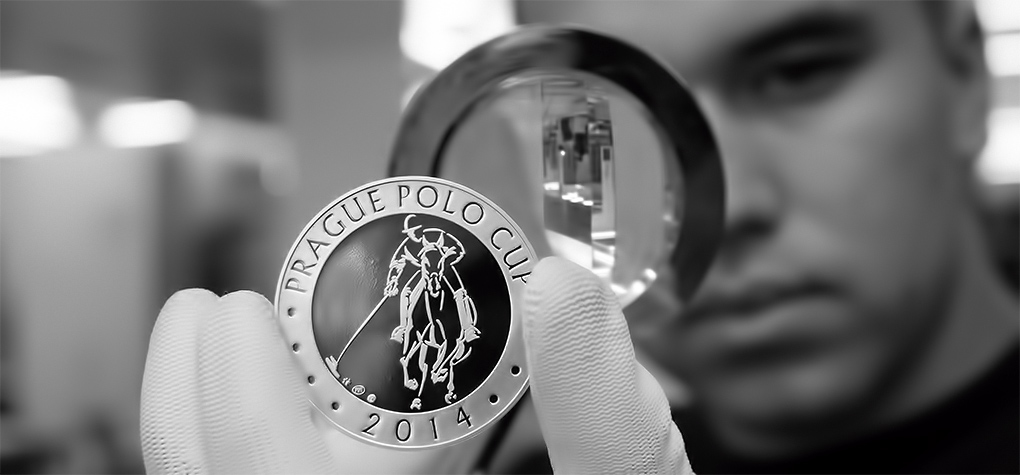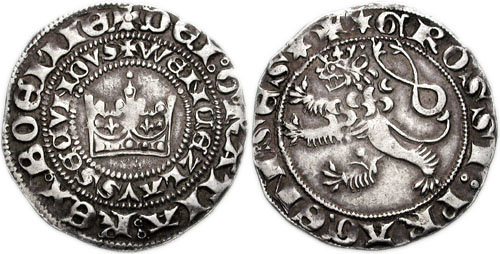CNC machines with high precision (Computer Numerical Control), are essential to create dies, or master hubs, that make gold coins or medals. Here is an outline of CNC Programming.
Software called CAD (Computer Aided Design), can be used to make digital 3D models for coin and medal designs.
The CAM (Computer-Aided Manufacturing) software generates toolpaths and instructions for CNC machines using the 3D model.
Choose the right material for die-cutting
CNC cutting dies and master hubs is carried out on tough materials such as steels, brasses, and hardened alloys. These materials will be able to withstand high-pressure strikes, and reproduce the design with precision.
Fixtures and Setup
Attaching the material with a secure grip to the CNC machine's worktable or vice is essential for machining precision. The correct fixing of the material is vital to stop vibrations and movement during processing.
CNC Machining Process
CNC machines employ cutting tools such as ball mills or end mills that cut out the design on the master hub or die.
The CNC machine will follow the set toolpaths that are programmed to remove material from the blank materials block, in line with the 3D design specifications.
Different sizes and types of cutting tools can be employed to create different depths, contours, and the details of the medal or coin design.
CNC machine movement is controlled by computer software, which guarantees precision down to micrometer levels.
Finishing, Refinement and Finishing
The hub master, also known as a die, is then refined.
Surface finishes can be improved through finishing or polishing surfaces using hand tools, or making use of equipment that is specifically designed for the job.
Quality Control and InspecQuality Control and Inspection
The finished die, or master hub, can be examined with precision using tools such micrometers. gauges, and optical measuring instruments.
Treatment of hardening (optional) and Treatment
Die dies could be treated using heat hardening or surface treatments, or both to increase the durability and wear resistance during the process of striking.
The precision and capabilities of CNC machines permit the exact reproduction of intricate designs onto dies or master hubs. They are crucial to create gold medals or coins that are consistent, precise and precise details. Take a look at the recommended CNC Machining Czechoslovakia gold coins more advice including buying silver bars, 1975 gold penny, double eagle gold coin, maple leaf gold coin, gold american eagle price, gold bullion bar price, sell gold silver near me, old coins, 1 0z gold, gold american eagle price and more.

How Does Laser Technology Work To Polish The Gold Surface Or Medal Die?
Laser technology used in the production of dies or master hubs can be utilized to improve the surface and increase accuracy. Here is how the laser technology helps refine the surface during this process.
The surface of the master hub or die is re-polished by using laser technology following initial machining. It assists in smoothing out any imperfections and eliminate burrs.
Detail Enhancement-
Laser ablation is utilized to produce or improve the intricate details of dies and master hubs. Lasers allow for precise etching or removal of material that allows for the creation of fine lines, textures or complex patterns.
Microstructuring-
Laser microstructuring entails the creation of tiny features or textures on the surface of a die. This technique can impart patterns or textures to improve the appearance or security features, or even medals or coins.
Surface Hardening or Treatment-
In certain instances, laser technology can be used for treatment or hardening of the surface on dies and master hubs. This process can increase the endurance and wear resistance of the material.
Precision Modifications
Laser technology allows precise modifications on master hubs or dies that do not affect their overall design. This allows changes to be made to the surface of the die, and addresses any imperfections or discrepancies that could affect the quality of the struck medals or coins.
Controlled Material Removal
Laser ablation is a method to remove material in a controlled fashion, particularly when intricate details are required. It provides a method of removal of materials that is non-contact which preserves the quality and integrity of the area around it.
Laser technology's use in refining the surface and enhancing details of dies or master hubs provides a greater quality of precision, greater details, and improved surface quality. This technology enhances the traditional methods of machining, permitting precision manipulation and improvement on the surface properties of dies essential to striking high quality gold coins or awards. Read the most popular laser processing Prague Mint gold coins more advice. including krugerrand gold coin, buy gold bars from bank, 1 oz gold bars, 1 oz silver price, sell gold coins, 1 oz gold bars, gold eagle coin, gold medal swimming, gold and silver dealers near me, buy gold coins and more.

Why Are Dies Polished By Hand In Order To Provide An Even Surface For Gold Medals And Coins?
For several reasons, it is crucial to polish dies manually in order for them to have a smooth, flawless surface. Improved Detail reproduction By hand polishing, imperfections, burrs or irregularities are eliminated from the surface of the die. A smooth surface allows complex details to be easily replicated on medals and coins.
Quality of the coin or medal is improvedA polished dash guarantees that the coins or medals have crisp, clear edges and relief. The finished product will exhibit an improved aesthetic and attraction.
Improved wear- polishing can reduce friction and wear during the process of making strikes. Die surfaces that are smooth reduce the possibility of irregularities or imperfections on struck coins and medals.
Consistency is key when striking. Hand-polished Dies provide an even surface to strike and ensuring uniformity. Consistency is vital to ensure the design's accuracy, depth and overall quality over multiple coins or medals.
Die Durability- Well-polished Dies are less likely to break or worn out during the striking process. They are longer-lasting and more durable, which permits greater strikes without compromising product quality.
Precision and Accuracy Hand polishing enables engravings to refine and fine tune certain areas of the die. This ensures that all details are reproduced accurately on the struck coins or medals. This level of precision is crucial to the precision of the finished product.
Quality Control- The polishing process is a component of quality control. Examining the die during the hand polishing process permits the detection and correcting any flaws before the striking procedure.
Surface Finish - Polishing provides an unique appearance or texture to medals and coins, enhancing their appearance.
Hand polishing the dies of gold coins and medals by hand is an essential step to make sure that the finished product will be high quality as well as accurate and pleasing to the eye. It's crucial for the appearance, consistency and longevity of the final product. Read the best hand polishing Czechoslovakia gold medals site advice. including best place to buy gold bars, angel coin, 1 oz gold, gold panda coin, double eagle coin, gold coins coin, price of 1 oz of gold, purchasing gold bars, st gaudens double eagle, today's 1 oz gold coin price and more.

How Do You Put Gold Blanks Into Coin Presses?
During the production process, gold blanks will be placed in coin presses, in which they are pressed using high pressure. This transforms them into finished coins or medals. Here's an overview of the process involved Loading Blanks-
The gold blanks are put in the feeder system which is connected to coin presses. This feeder system provides a constant quantity of blanks for the coin press.
Feeding Blanks on the Press
This feeder system ensures that each blank is placed precisely in the chamber for stamping. The feeder system guarantees that each blank is precisely placed to be stamped.
Alignment and Positioning
The blanks in the pressing chamber are positioned, aligned, and oriented perfectly for the stamping.
Striking under High Pressure
The coin press exerts massive pressure on the gold blanks by using two dies, one stationary and the other moving. The stationary die makes negative designs engraved on the coin, while the moving die is used to strike the blank.
The moving die strikes the blank with significant force, transferring the design to the surface of the blank. The force generated by the dies creates the design which creates the raised relief and specifics on the coin or medal.
Repeated Striking
To produce designs or images that are more sharp and better defined, multiple strikes may be applied on rare coins or collectible editions. Each strike enhances the detail on the surface.
Ejections and Collection
Following the press's operation, newly-minted coins or medals are released out of the press into trays or containers. They are checked to ensure quality control and ensure that stamped designs meet all standards and criteria.
Post-Processing-
The design of the medal or coin may require additional processing such as edge lettering (either edge reeding) or post-strike treatments.
The process of stamping gold blanks using high pressure is vital as it creates the desired design on the blanks of gold. These are then transformed into finished coins or medals ready for circulation, collection or even commemoration. The process of stamping requires preciseness as slight the variations in pressure and alignment could affect the quality of the final product. Have a look at the recommended minting Czechoslovakia gold coins website advice. including gold coins and bullion, gold bars price, silver eagle coins, gold silver bullion, 10 dollar gold coin, gold and coin near me, double eagle coin, coin buy silver, gold coins for sale, 1 10 oz gold eagle and more.
